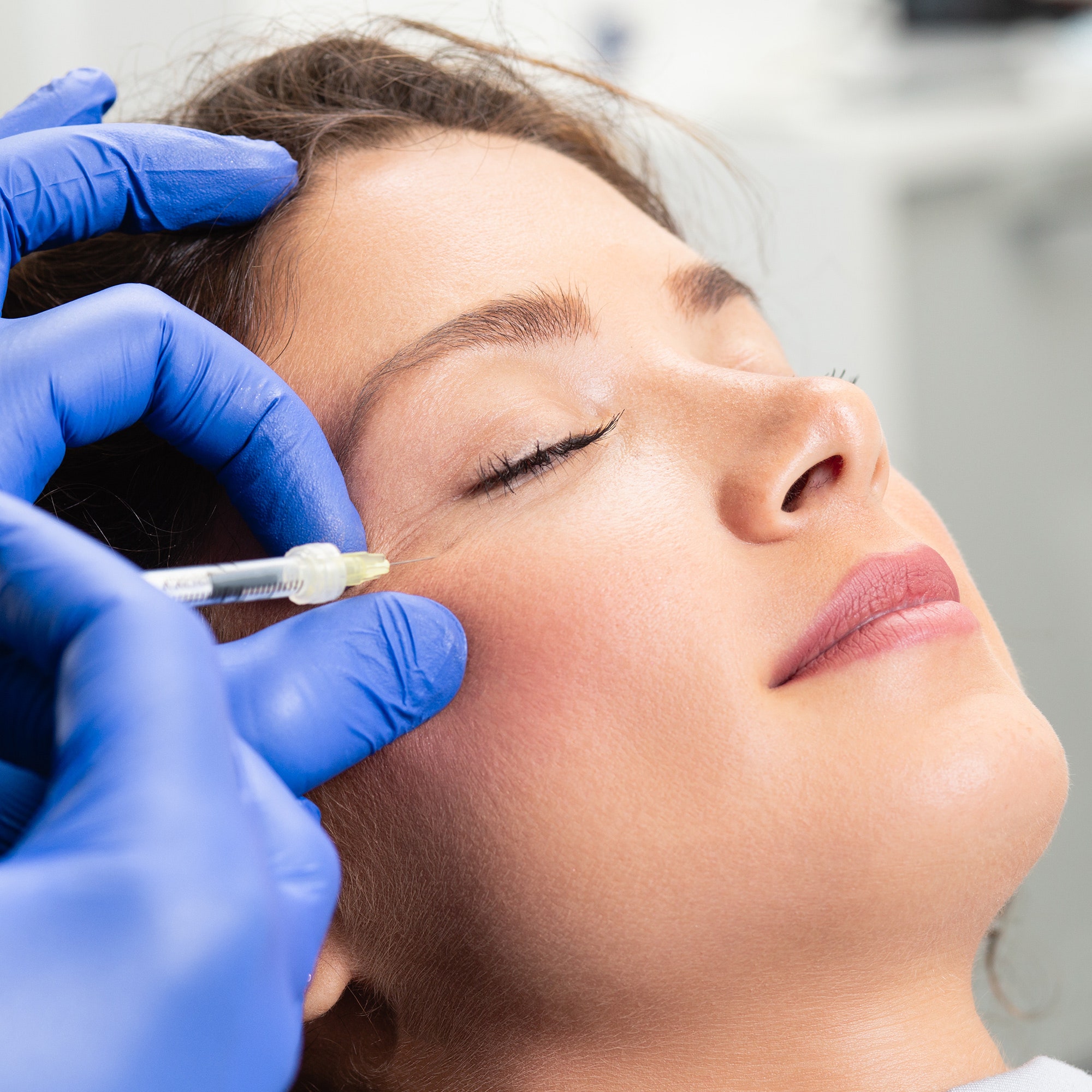By: Denis Campbell
one in six people who have Botox injected into their face suffer complications such as bruising, headache, nausea and “frozen” features, a study into the anti-aging treatment has found.
The research shows that having facial Botox injections for cosmetic reasons can also produce side-effects including muscle stiffness, pain, dizziness, and even a heart attack.
The findings – which the authors have shared with the Observer – have renewed calls for tighter regulation of deployment of the substance, which is administered in beauty clinics and temporarily removes signs of ageing such as frown lines and crow’s feet.
An estimated 900,000 facial injections of Botox are carried out every year in Britain.
The finding of a 16% complication rate with the procedure has emerged in a review of global evidence undertaken by four doctors at the Royal Free and St Thomas’ hospitals in London; three are plastic surgeons and all are academic researchers.
They found that, despite the high number of mishaps arising from facial Botox, only 188 “adverse reactions” were reported to Britain’s medicines regulator over the past 29 years. The professional standards authority for the cosmetic treatment industry warned that such a tiny number showed health professionals and beauty therapists administering Botox were failing to report what may be very large numbers of unpleasant side-effects.
Dr David Zargaran, the lead author of the study, said: “I was surprised to find such a low number of incidents reported to the MHRA. It was surprising as it equates to less than 10 adverse events a year across the UK. I believe the MHRA database of complications is a significant underestimate of the total number of complications.”
Zargaran and his colleagues’ concerns are about people without proper training injecting Botox into people’s faces and not with the substance itself, which has been approved for several medical purposes in the UK.
Zargaran and his team found an overall complication rate of 16% when they analysed 30 studies involving 17,352 injections of Botox into the face. The most common bad reactions involved localised skin reactions such as bruising (5%), headache (3%) and facial paresis (2%), in which parts of the face such as the eyelid or eyebrow are paralysed.
The adverse reaction reports submitted to the MHRA between 1991 and 2020 outlined how the 188 Botox recipients had experienced a total of 481 side-effects between them, which indicates that people who suffer complications often have several of them. They showed that in 53 of the 188 reports (28%) the recipient had flu-like symptoms or a chill while in 51 cases (27%) they had a headache or migraine.
In addition, one in five reports mentioned skin reactions such as bruising, or muscle stiffness, weakness or pain, or dysesthesia, which is a tingling or burning sensation. More seriously, 25 reports – one in eight – detailed cardiovascular symptoms ranging from high blood pressure to an abnormally fast heart rate and heart attacks. Small numbers also suffered an anaphylactic reaction or wound infection such as cellulitis.
Professor David Sines, the chair of the Joint Council for Cosmetic Practitioners, an industry watchdog which campaigns for tighter controls on Botox, said the new study underscored that the treatment could be dangerous.
Clinics administering Botox should be licensed and required to report all complications as a condition of their license, to avoid the under-reporting of side-effects by medical professionals and “probably no reporting from unregulated practitioners”, Sines said.
Zargaran urged ministers to improve regulation of the cosmetic sector, including full disclosure of complications. His findings will be published in the Journal of Plastic, Reconstructive and Aesthetic Surgery.
A spokesperson for the MHRA said: “The MHRA encourages reporting of side-effects to authorised botulinum toxin products via the yellow card scheme. These products can have rare but serious side effects and should only be administered by physicians with appropriate experience.”
‘It had frozen the muscles’
Kathy Leeman first tried Botox eight years ago when she was in her 30s, as, she says, she had frown lines between her eyebrows and deep lines across her forehead. “Initially, I was really happy with the procedure,” she says. “It softened the lines, and I’d get it done once or twice a year.”
A couple of years ago she noticed that the area under her eyes looked really puffy, her eyebrows had dropped and her eyelids were drooping over her eyes. “At first, I didn’t put two and two together, and I tried everything: creams, facials, rollers,” she said. “Nothing was working to mitigate it, and I felt so frustrated and started to look so much older. I think the Botox had frozen the muscles and they had stopped functioning.
Now 45, Kathy hasn’t had Botox for two years but says she is still experiencing the same side effects. “I’m getting acupuncture to help, and it’s improving week by week, but it was a lesson learned. I know now that it’s not worth those temporary effects if it makes alterations you weren’t expecting. It wasn’t worth it and I wouldn’t do it again.”


